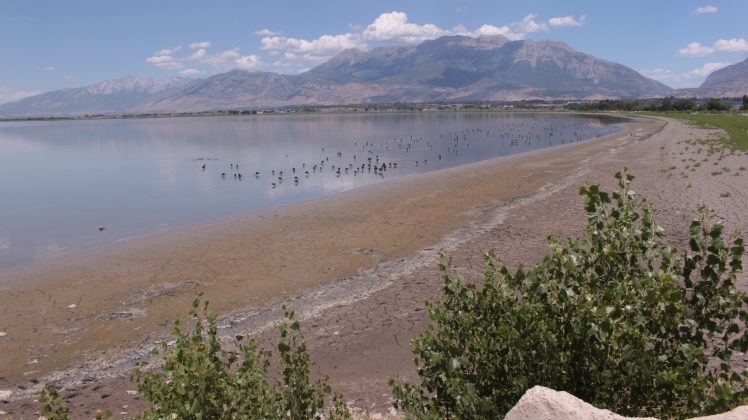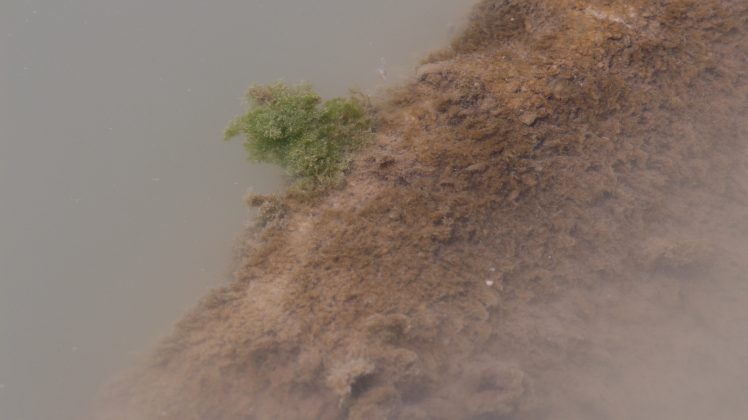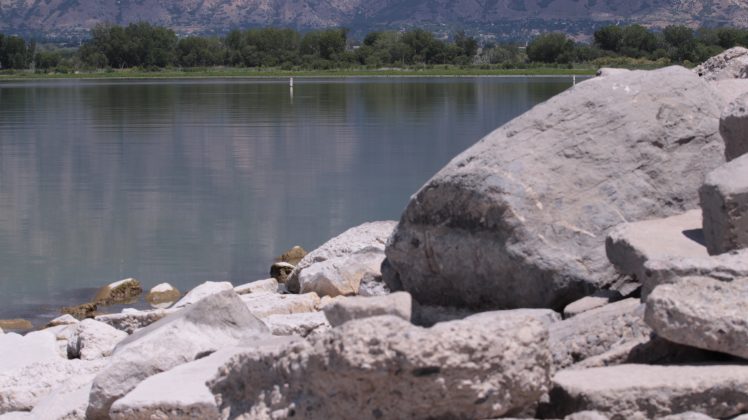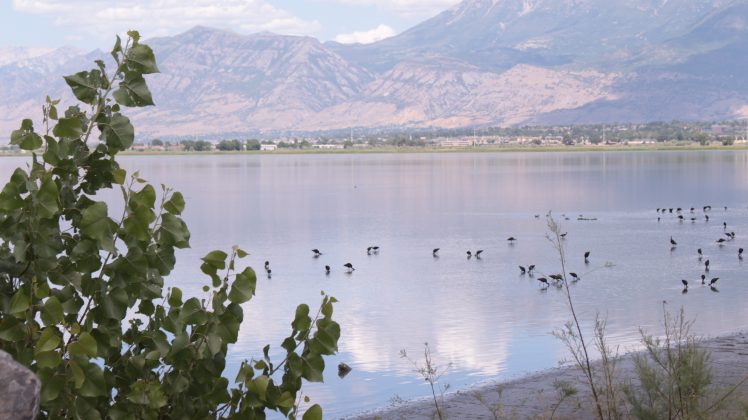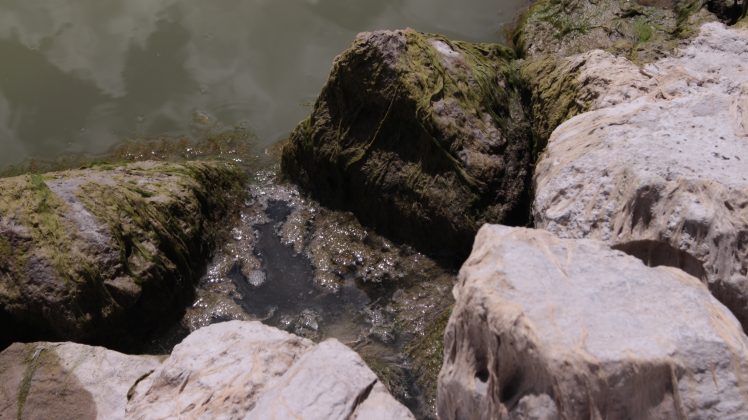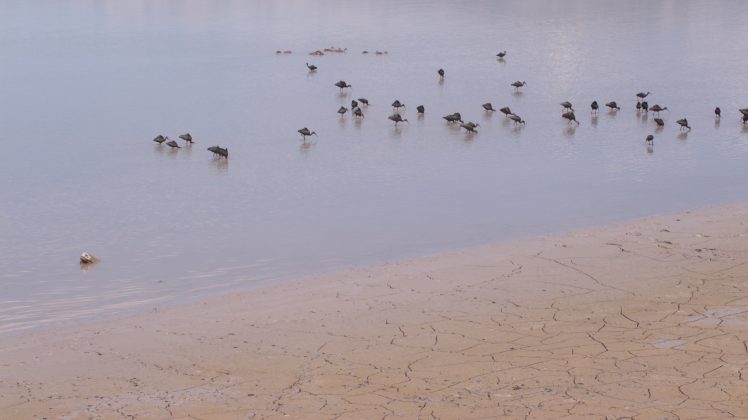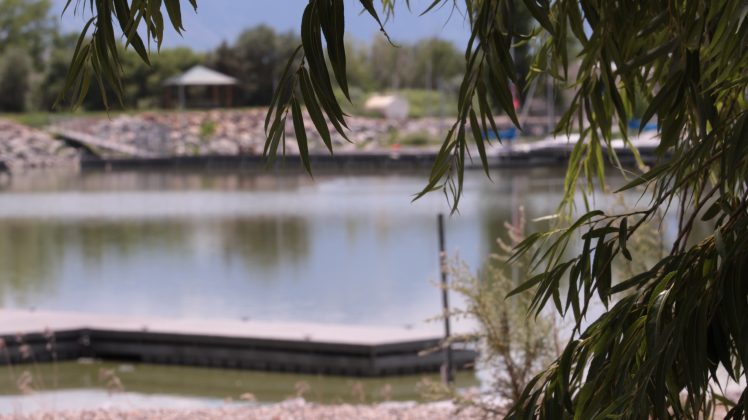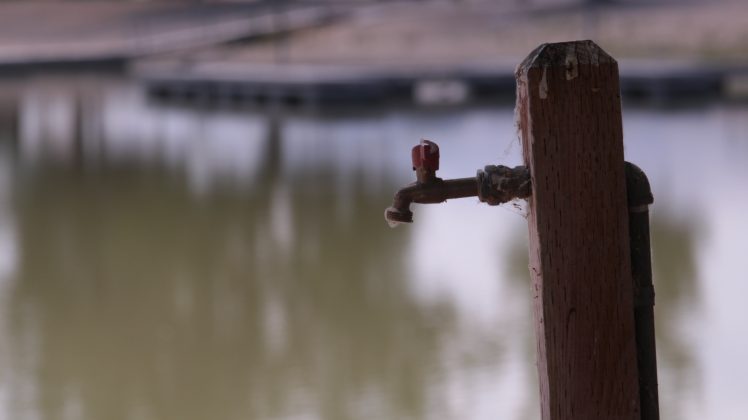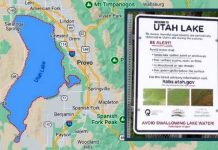SALT LAKE CITY, Utah, July 28, 2016 (Gephardt Daily) — Public health officials have reopened Utah Lake for boating, based on the latest round of samples analyzed by the Department of Environmental Quality, which indicate blue-green algae is dissipating at most locations in the lake, and in the Jordan River and associated canals.
The lake is not recommended for swimming, jet skiing and other water sports that put people in contact with the water, according to a news release from the DEQ. The advisory for the lake is being downgraded to a “WARNING,” rather than a closure. While testing continues recreational users should adhere to posted signs and use caution.
Officials expect additional results from toxin tests early next week.
The public is asked to remain watchful and report any changes in water color that may indicate presence of blue-green algae. Elevated levels of nutrients, combined with warm temperature, abundant sunlight and calm water can promote rapid algal growth. Symptoms of cyanotoxin poisoning include headache, fever, diarrhea, abdominal pain, nausea and vomiting, and sometimes allergic-like reactions from the skin.
“This is encouraging news,” said Ben Holcomb, coordinator of Water Quality’s Harmful Algae Bloom Program, in a prepared statement. “Yet under the right conditions algae blooms can reappear so we remain cautious.”
Sampling results from the previous week show low to no detection of toxins in the open waters of Utah Lake except for at Lincoln Beach/Harbor area where samples were much greater than the recreational threshold.
The Utah Department of Health and Utah County Health Department closed Utah Lake on July 15, when lab results showed concentrations of algal cells in the water three times the threshold considered an acute health risk by the World Health Organization.
UCHD executive director Ralph Clegg said his agency will continue to monitor the lake.
“Ongoing monitoring is vital since this is still early in the season for algal blooms,” he said, in the prepared statement. “We will continue to inform the public of health risks associated with algal blooms.”
Further tests confirmed the presence of cyanobacteria in Jordan River and related canals on July 17, which prompted the Utah Department of Agriculture and Food to strongly advise farmers and ranchers against using water from Utah Lake for food production and livestock watering. Canal companies shut off secondary water as a precaution. The advisory was lifted on July 22. Drinking water was not at risk because it comes from a different source.
The Utah County portion of Jordan River remains open, with posted “CAUTION” signs. There are “WARNING” and “CAUTION” signs posted along the Salt Lake County portions of the Jordan River based on test results.
Signs posted around the lake note that toxic algae is present, the lake is unsafe for people and pets and instruct people:
- Do not swim or water ski in area of scum
- Do not drink lake water
- Keep pets and livestock away
- Clean fish well and discard guts
- Avoid areas of scum when boating
For concerns about possible human exposure, call Utah Poison Control at 800-222-1222, or your physician. For concerns about possible animal exposure; contact a local veterinarian.
For updates, click here.


